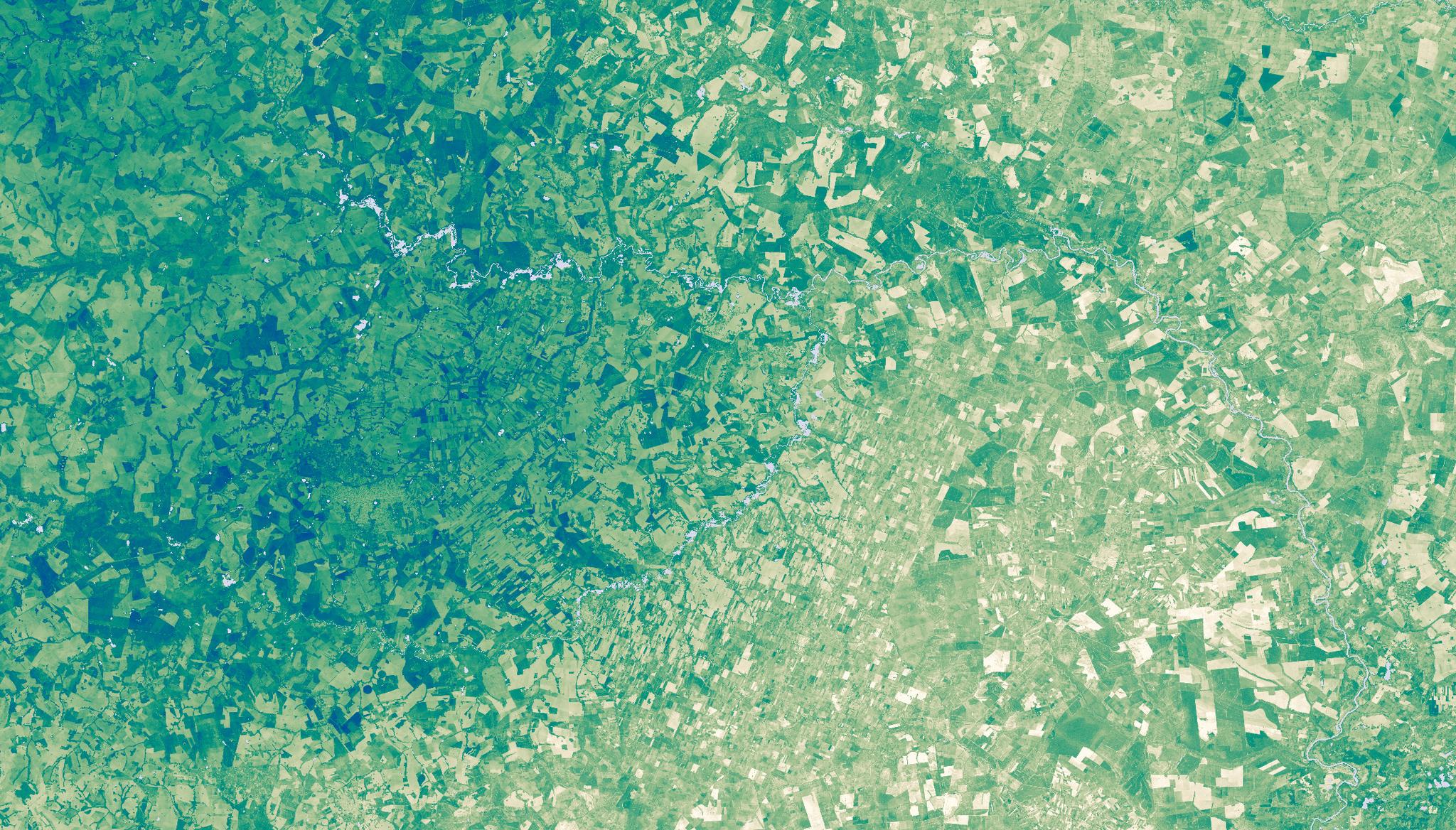R&D with Scientific Excellence: Stories from Planet’s EO Lab

Planet Soil Water Content data visualization of Mato Grosso do Sul, Brazil taken April 9, 2023. © 2023 Planet Labs PBC. All Rights Reserved.
StoriesWhen building our products and services here at Planet, we stay committed to both innovation and scientific excellence. Our company’s dedication to advancing scientific knowledge can be seen in the creation of Planet’s Earth Observation Lab (EO Lab), a dedicated team of Planeteers with the mission to support early stage product and feature development with scientific excellence. The EO Lab has tackled everything from sensor fusion and Planetary Variables to our machine learning capabilities.
The EO Lab’s top priorities include providing internal and external expertise, credibility, and exposure for Planet products. We work to make our existing products stronger by exploring and expanding our products’ capabilities through early stage R&D activities and increasing value for customers through innovation, validation, and scientific improvements. Overall, our objective is to act as Planet’s center of scientific excellence.
As we get closer to one of the premier scientific events of the year, AGU 2023, we wanted to share some of the latest things we are focusing on in the EO Lab, with a great emphasis on our Planetary Variables. The EO Lab operates as an innovation engine for our Planetary Variables products, and we continue to test and develop their capabilities. Here are just some of the scientific projects we are working on with them right now:
Land Surface Temperature, for instance, provides a critical data feed that can support research into urban heat, agricultural change, and water management. We are currently researching how to increase consistency and reduce latency in the feed by developing a methodology based on the synergy between passive microwave temperatures from Advanced Microwave Scanning Radiometer 2 (AMSR2) and optical data from Sentinel 2. By combining these datasets, we aim to leverage the strengths of both sensors to derive reliable Land Surface Temperature retrievals for all weather conditions. We are also exploring new validation techniques with other thermal data feeds.
Additionally, we are testing our Crop Biomass product’s capabilities by monitoring three major U.S. crops: corn, wheat, and soybean. In our recent study, we demonstrated and quantified the ability of Crop Biomass to monitor in near-real time crop conditions of both irrigated and rain-fed corn and soybean fields. We also showed the product’s ability to forecast yield early in the growing season with a variety of cropping systems.
Furthermore, our Soil Water Content product provides vital information for the insurance, agriculture, and water management industries. Our team is currently researching how to increase resilience of this data feed by diversifying our satellite data input. We’ve proposed a new method that uses multiple passive microwave observations in one consistent framework. With it, we demonstrated our ability to provide near-daily global Soil Water Content at 1 km resolution from 2012 onwards. This exciting method can provide reliable resiliency in the event of a satellite outage.
These are just some of the research projects that we will be sharing at AGU 2023 this December in San Francisco. The AGU 2023 Program & Schedule is now live, so be sure to search for Planet abstracts and events ahead of arrival, and stop by to see us at Booth 1041. We look forward to sharing more insights from the EO Lab; stay tuned for more stories from us along the way.

Ready to Get Started
Connect with a member of our Sales team. We'll help you find the right products and pricing for your needs

